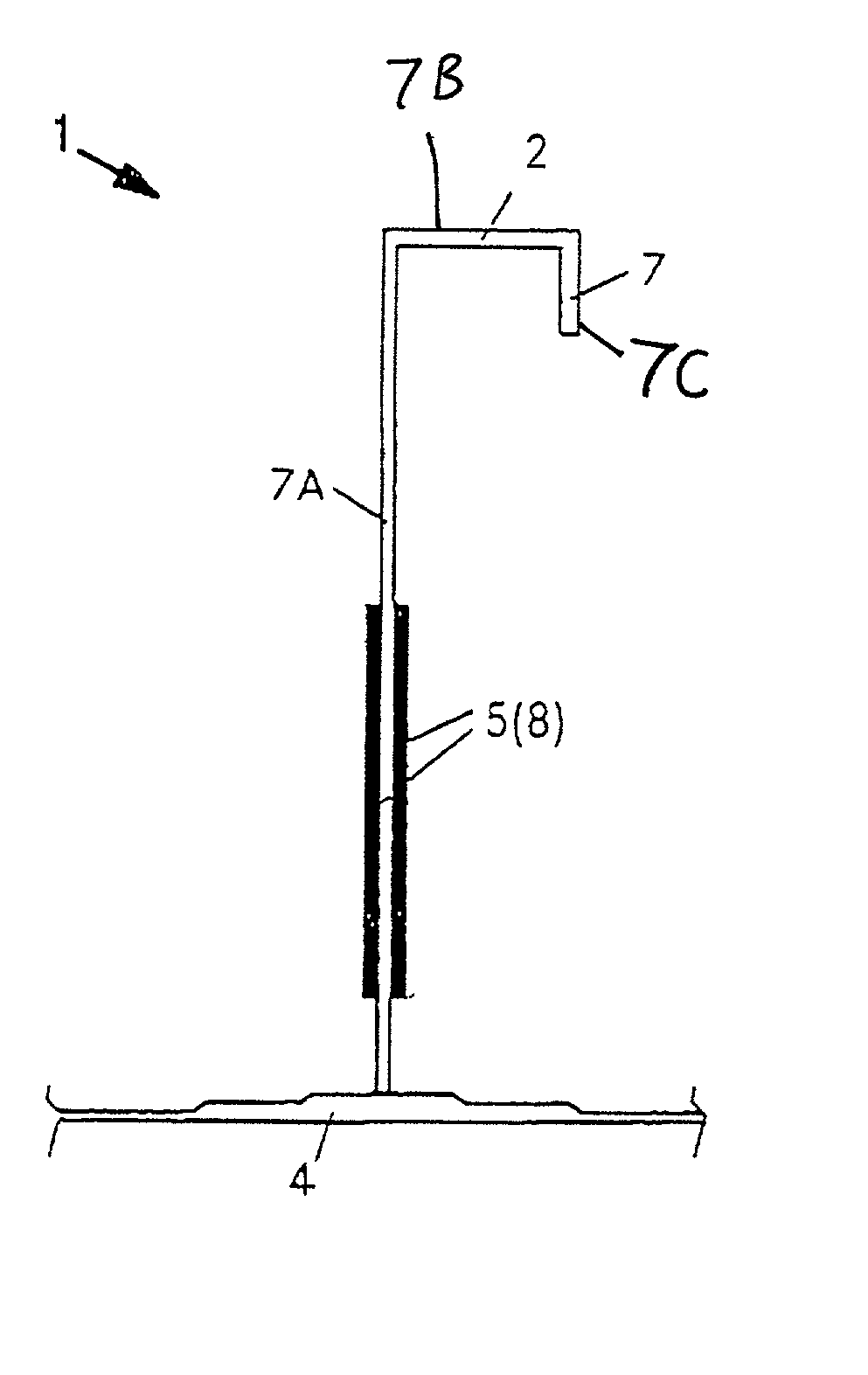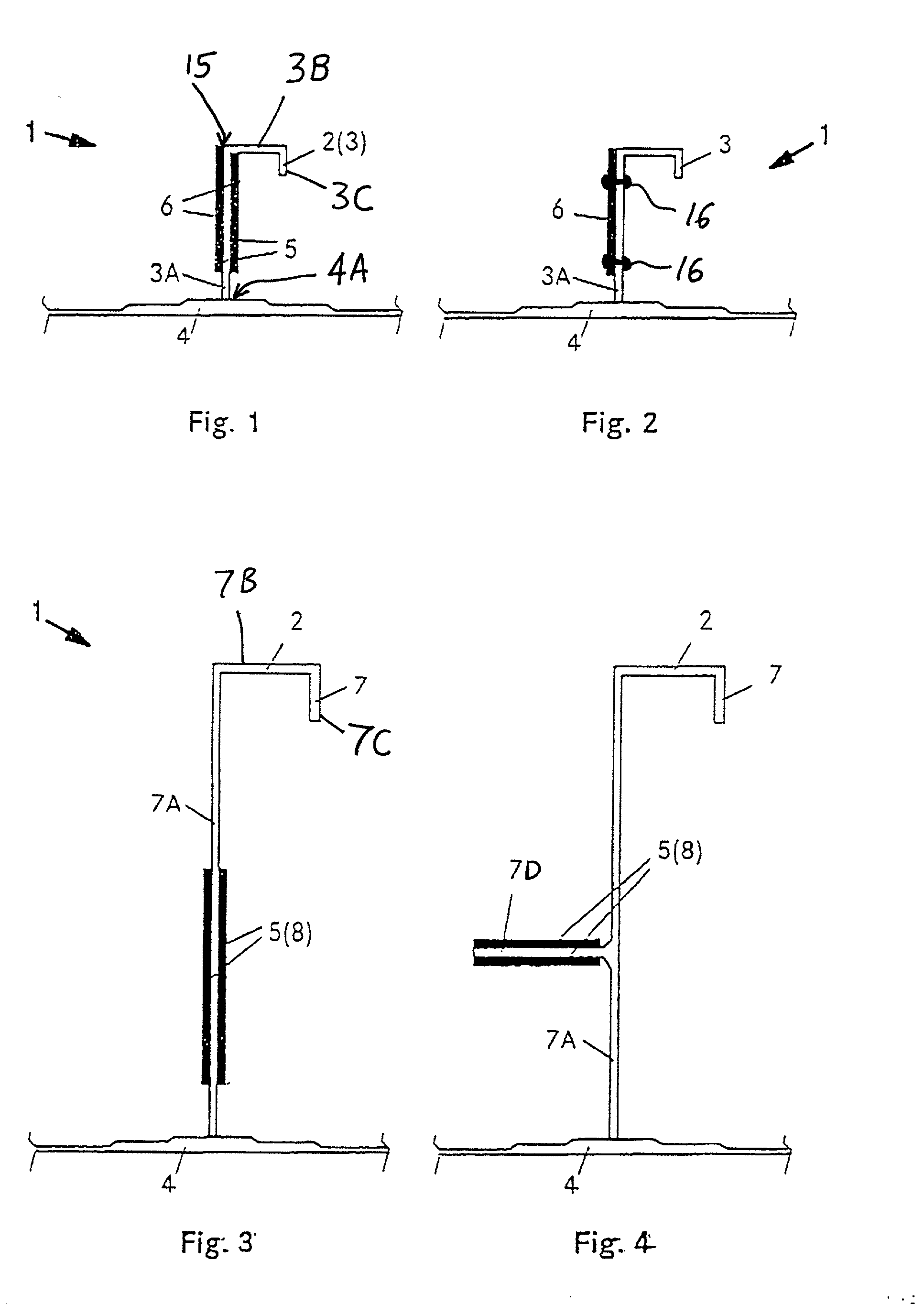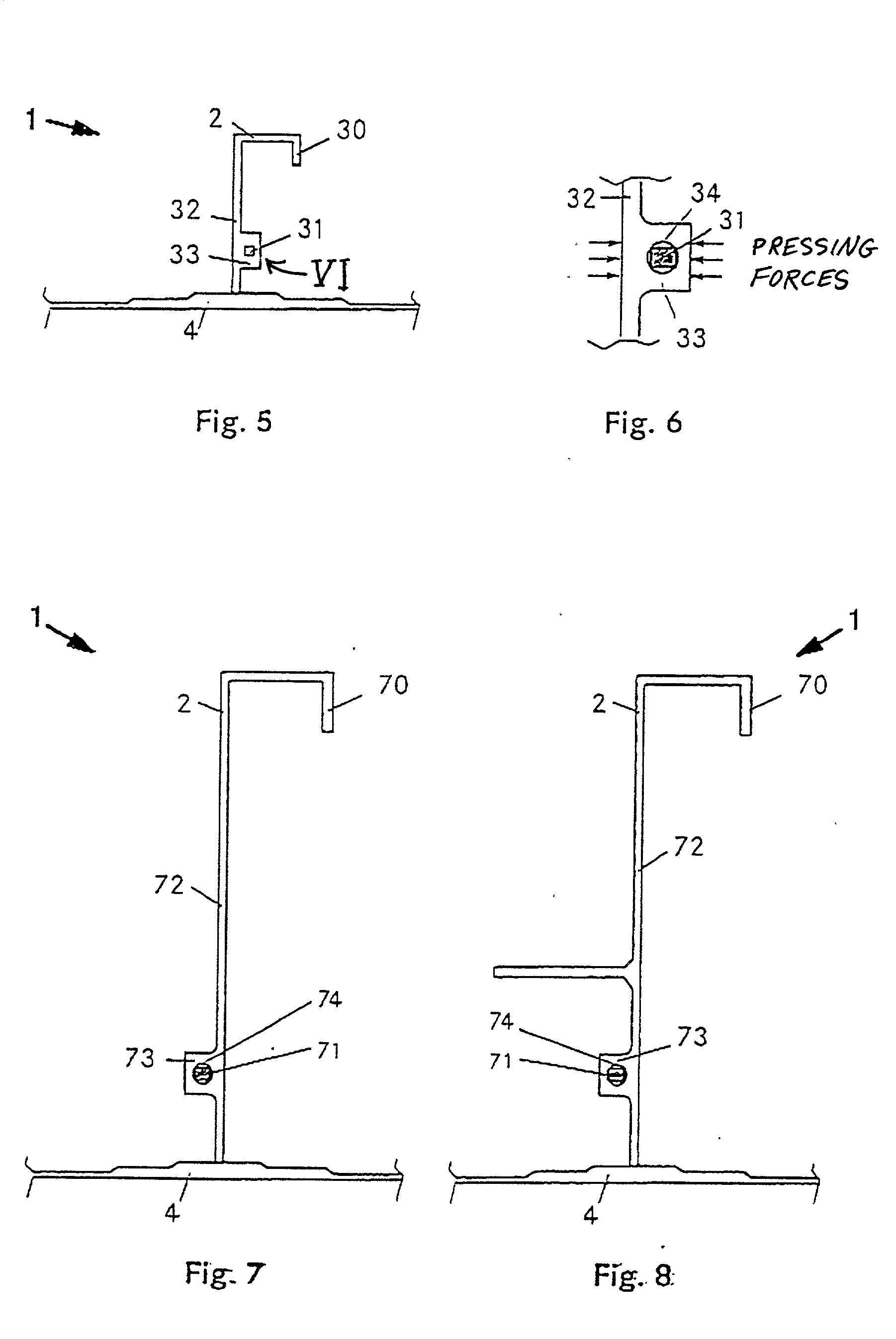Aircraft fuselage shell component with crack propagation resistance
a fuselage shell and crack-propagating technology, which is applied in the field of aircraft fuselage shell construction, can solve the problems of failure of respective stiffening profile members, increased costs and efforts in fabrication procedures, and large total weigh
- Summary
- Abstract
- Description
- Claims
- Application Information
AI Technical Summary
Benefits of technology
Problems solved by technology
Method used
Image
Examples
Embodiment Construction
[0029] FIGS. 1 and 2 each respectively show a portion of a structural shell component and particularly a fuselage shell component 1 in the area at which a stiffening profile member 2 is welded onto a fuselage skin sheet 4. Particularly in FIGS. 1 and 2, the stiffening profile member 2 is a stringer 3 that runs in the aircraft longitudinal direction of the aircraft fuselage structure. The overall structural shell component 1 to be used as a fuselage shell of an aircraft includes a plurality of such stringers 3 respectively extending in the aircraft longitudinal direction and spaced apart from one another in the aircraft circumferential direction. Generally, the stiffening profile members 2 could be stringers, frame members, ribs, spars, etc.
[0030] The connection between each stringer 3 and the skin sheet 4 is achieved by means of welding, such as laser beam welding, or according to any other conventionally known technique, for example as disclosed in the German Patent Publications 19...
PUM
| Property | Measurement | Unit |
|---|---|---|
| strength | aaaaa | aaaaa |
| tension | aaaaa | aaaaa |
| lengths | aaaaa | aaaaa |
Abstract
Description
Claims
Application Information
 Login to View More
Login to View More - R&D
- Intellectual Property
- Life Sciences
- Materials
- Tech Scout
- Unparalleled Data Quality
- Higher Quality Content
- 60% Fewer Hallucinations
Browse by: Latest US Patents, China's latest patents, Technical Efficacy Thesaurus, Application Domain, Technology Topic, Popular Technical Reports.
© 2025 PatSnap. All rights reserved.Legal|Privacy policy|Modern Slavery Act Transparency Statement|Sitemap|About US| Contact US: help@patsnap.com



